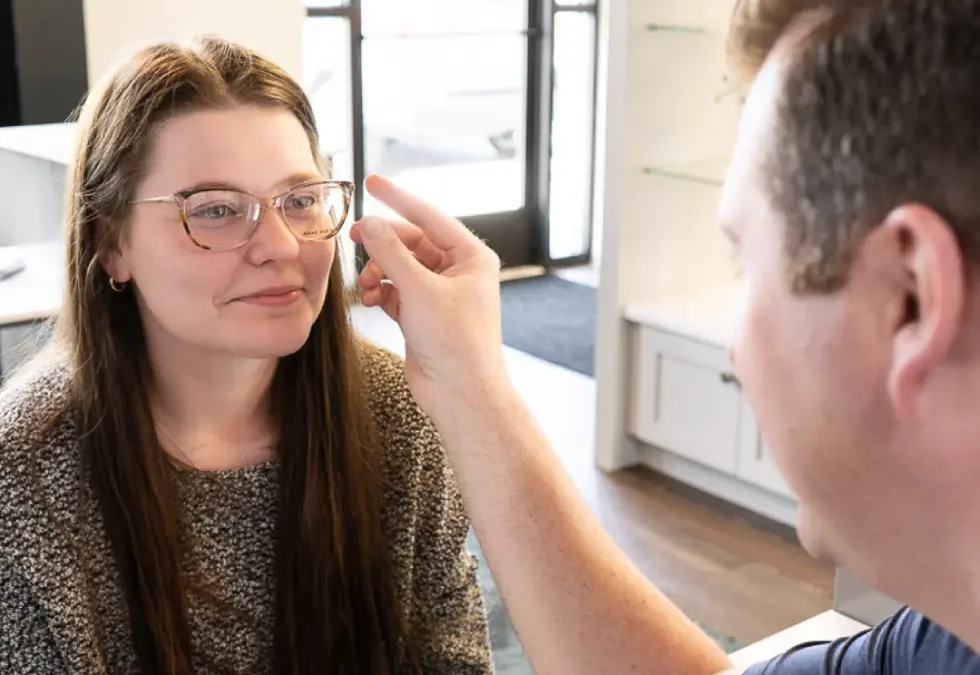When your eyes aren’t working well together, it can affect everything from reading and learning to balance and focus. At OPMT Vision Centers, we offer customized vision therapy programs that help retrain how the eyes and brain communicate — with lasting improvements in comfort, coordination, and clarity.
Whether it’s for a child who struggles to keep their place on the page, or an adult dealing with lingering vision problems after a concussion, vision therapy offers a non-invasive solution that can make daily tasks easier and more enjoyable.
What Is Vision Therapy?
Vision therapy is a type of physical therapy for the visual system. But instead of targeting muscles in the body, it focuses on the complex relationship between your eyes and brain — and how well they’re working together to support your vision.
Using a series of supervised in-office treatments and guided at-home exercises, vision therapy can address a range of visual issues like poor eye tracking, focusing, and depth perception. It’s not just about improving eyesight; it’s about improving how you use your eyes to function in the world.
Each treatment plan is tailored to the individual, and progress is carefully monitored by our skilled optometrists. Vision therapy is especially effective for those with functional vision problems that can’t be corrected by glasses or contacts alone.
Who Can Benefit from Vision Therapy?
Vision therapy can be life-changing — especially for people who’ve struggled for years without realizing that their symptoms are connected to a vision issue.
Children are among the biggest beneficiaries. If your child is bright but has trouble reading, skips lines, gets frequent headaches, or has poor attention in class, vision therapy could help. According to the American Optometric Association (AOA), 1 in 4 school-aged children has a vision disorder that can interfere with learning.
Other common candidates include:
- Adults recovering from concussions or traumatic brain injuries
- Patients with strabismus (eye turn) or amblyopia (lazy eye)
- People with convergence insufficiency — a condition that affects around 5% of U.S. children and causes discomfort with close-up tasks like reading
- Athletes seeking better reaction time, hand-eye coordination, and visual focus
Studies also show that more than 50% of individuals with a traumatic brain injury (TBI) experience visual issues, many of which can be improved with vision therapy.
Vision Therapy at OPMT Vision Centers: A Smarter, Personalized Approach
At OPMT Vision Centers, we take a modern, results-driven approach to vision therapy. Led by Dr. Richard Durocher — a nationally recognized expert in vision therapy and low vision rehabilitation — our Vision Therapy Institute delivers care that’s personalized, evidence-based, and deeply compassionate.
We start by identifying the root of each patient’s visual challenges through advanced testing and a detailed case history. From there, we develop a custom treatment plan that may include weekly in-office sessions, take-home activities, and regular progress assessments. Every step of the way, our team tracks improvements and adjusts your plan to match your pace.
What sets OPMT Vision Centers apart is our commitment to innovation and accessibility. With seven locations across Middle Tennessee, we make it easy to access quality care without sacrificing your schedule or comfort.
Signs Your Child (or You) May Need Vision Therapy
Vision problems can often be mistaken for other issues — especially in children. If your child is struggling in school or avoiding reading altogether, it may not be a behavior problem. It might be their eyes.
Common signs include:
- Frequent eye rubbing or blinking
- Closing one eye when reading
- Headaches or dizziness after screen time
- Skipping lines or losing place while reading
- Poor hand-eye coordination or clumsiness
- Trouble focusing or following instructions
The AOA estimates that 60% of children labeled as “problem learners” actually have undiagnosed vision problems. Vision therapy can uncover and resolve the real issue behind many academic or behavioral concerns.
For adults, symptoms might show up as eye strain, double vision, or difficulty concentrating after a head injury. If you’ve noticed any of these issues, vision therapy is worth exploring.
How to Get Started with Vision Therapy at OPMT Vision Centers
If you or your child could benefit from vision therapy, the first step is a comprehensive eye exam at OPMT Vision Centers. From there, we’ll conduct a specialized vision therapy evaluation to identify any functional issues and determine the right course of action.
Once a plan is in place, we’ll walk you through what to expect: how often sessions will occur, what types of exercises we’ll use, and how long the program may last. Most therapy programs last several months, with noticeable progress in just a few weeks.
Our team is here to answer questions, track your progress, and support you every step of the way.
Clearer Vision. Greater Comfort. A Better You.
Vision therapy isn’t just for improving eyesight — it’s about helping people of all ages feel more comfortable, confident, and in control of their world. Whether it’s the joy of reading without frustration or the ability to return to work after a head injury, the results are real and life-changing.
At OPMT Vision Centers, we believe that eyes should work smarter, not harder. And we’re here to help make that happen.
Ready to learn more? Schedule a vision therapy consultation with us today and take the first step toward clearer, more coordinated vision.f
